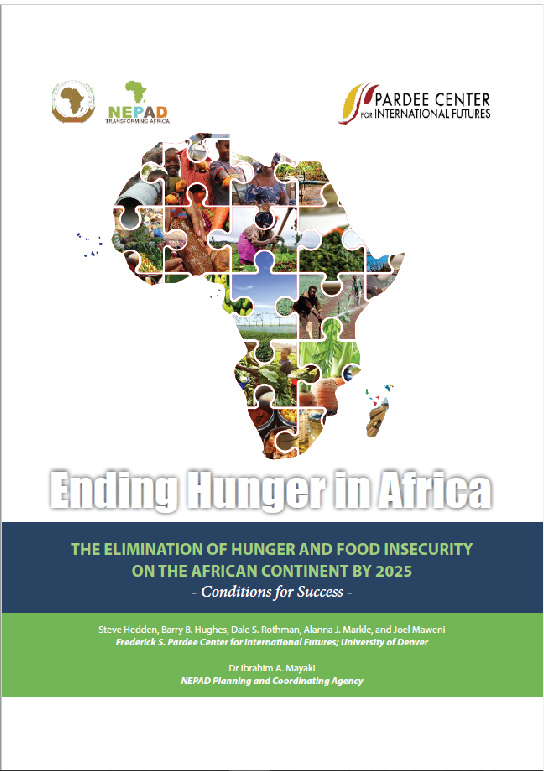The African Union has set a target to “eliminate hunger and food insecurity by 2025.” Both Agenda 2063 and the African Union Summit decision on Accelerated agricultural Growth and Transformation have reaffirmed this commitment (African Union, 2014, 2015). Unfortunately, Africa is not currently on track to meet these targets. Immediate, mutually reinforcing interventions are required to bring the continent closer to eliminating hunger and food insecurity.
The purposes of this report are (1) to describe the path that Africa has been on with respect to reducing hunger and pursuing food security, (2) to show where that path
would likely lead in the coming years without significant change in policy, and (3) to outline the conditions and actions necessary to put Africa on track to eliminating
hunger and food insecurity as soon as possible.
The Food and Agricultural Organization of the United Nations (FAO) defines hunger, or undernourishment, as an inability to acquire enough food to satisfy dietary
energy requirements. Food security is a situation where all people at all times have access to food and is composed of four dimensions: food availability, economic
and physical access to food, food utilization, and stability over time. This report will mainly focus on the prevalence of undernourishment and net dependence on imports
as the two indicators of hunger and food security, respectively.1 Nearly one in five people living in Africa is hungry.2 That rate has decreased steadily since the mid- 1990s,
with the fastest decline in West Africa and the lowest undernourishment rate in Northern Africa. Unfortunately, the total number of undernourished Africans has climbed
since 1991, largely driven by increasing population. East Africa has the highest levels of hunger in terms of both prevalence and absolute numbers—about half of the
total undernourished population of the continent is in its Eastern region.
On the supply side, Africa was not producing enough food to feed its own population adequately in the early 1990s, but its exports and imports of agricultural goods
were both relatively small and in balance. Imports have since grown to be over four times the level of exports (in tons), and net imports are now about 14 percent of total
agricultural demand.
To analyze whether or not Africa is on track to eliminate hunger and food insecurity by 2025, this research uses the International Futures (IFs) forecasting system. IFs, and
this research, draws heavily on data from the FAO and other international sources. The Base Case scenario of IFs considers historical patterns to explore the dynamic
future path of Africa.
Looking at the path going forward, without substantial change in the dynamics of demand and supply, the portion of Africans who are undernourished will fall from
about 17 percent in 2015 to about 12 percent in 2025. Over the same period, the import dependence of Africa will rise from 14 percent of total demand to 25 percent.
Africa is not on track to eliminate hunger and food insecurity by 2025.




